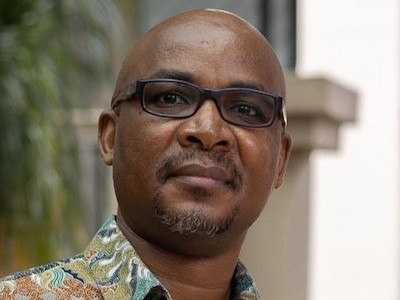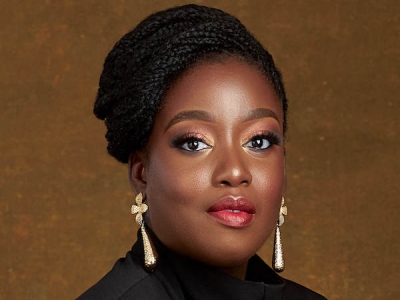 Dr. Sharilyn Hale is an instructor in the MPNL program and the founder of Watermark Philanthropic Counsel. A practitioner, educator and researcher, Hale is a Chartered Director (C.Dir.) and an experienced volunteer director with local, national and international boards. She’s served in executive leadership within charities, working directly with philanthropists and boards of directors, including on the Advisory Council for the MPNL program. Her doctoral research focused on governance and family philanthropy. She spoke with PANL Perspectives about governance issues that she sees in her consulting work with boards and their CEOs.
Dr. Sharilyn Hale is an instructor in the MPNL program and the founder of Watermark Philanthropic Counsel. A practitioner, educator and researcher, Hale is a Chartered Director (C.Dir.) and an experienced volunteer director with local, national and international boards. She’s served in executive leadership within charities, working directly with philanthropists and boards of directors, including on the Advisory Council for the MPNL program. Her doctoral research focused on governance and family philanthropy. She spoke with PANL Perspectives about governance issues that she sees in her consulting work with boards and their CEOs.
Question: Do charities, nonprofits and foundations really need a board of directors?

“You can have an organization without staff, but you can’t have an organization without a board.” –Dr. Hale
Sharilyn Hale: Yes, they do. Boards are the ultimate stewards of an organization’s mission and assets for the public good. You can have an organization without staff, but you can’t have an organization without a board. And, while a board can delegate authority – as they do when they hire and empower a CEO or executive director – they can’t delegate responsibility. A CEO and board govern together, but the board is always responsible. This is important framing. It’s why the relationship between a board and CEO is so critical. If the relationship between them isn’t healthy, often the organization isn’t healthy.
This requires a positive orientation towards the relationship, with the belief they’re partners in mission and shared leadership. I’ve seen boards micromanage, disrespect, and undermine their leader. I’ve seen CEOs roll their eyes, saying “Ugh, the board,” and actively recruit directors who will be disengaged, so that CEOs don’t have to deal with or be hampered by the board. Both approaches create many risks for an organization.
Q: What risks? What are the impacts when a board-CEO relationship isn’t robust?

“We need exceptional performance in the charitable sector. Many things are riding on being effective and creating meaningful results.” –Dr. Hale
Hale: The quality of the board/CEO relationship tends to range from transformational to problematic, and can ebb and flow over time, especially when there’s leadership change. There are deeply aligned relationships in which the parties work with high levels of respect, trust and communication, and where 1 + 1 = 3. More common are relationships that are functional or mediocre, but rarely create added value. Then sadly, some relationships are deeply dysfunctional and painful for everyone involved. Mediocre and dysfunctional alike have implications.
First, there are implications for people. CEOs are people, and so are directors on a board. Most of us intend to show up in the world to engage in positive and productive relationships with others in our professional or volunteer lives. When those relationships are poor or when they break down, it hurts. It can be painful. People may question their competence and professional expertise, their sense of self, or become disillusioned, and in some cases, it can impact their sense of well-being and mental health. So, the relationship is important because people are important.
Second, mediocre or dysfunctional relationships can jeopardize purpose. The board and CEO are intended to be partners in purpose, and they need to be aligned on the identity and direction of the organization. When the relationship isn’t functioning well, it can lead to divergence, and clarity around mission can be lost, which impacts the ability of the organization to deliver.

“When the board/CEO relationship breaks down, it’s human nature to fight or flee.” –Dr. Hale
Which brings us to performance. We need exceptional performance in the charitable sector. Many things are riding on being effective and creating meaningful results. When the board/CEO relationship breaks down, it’s human nature to fight or flee. We may step back, avoid difficult conversations, decrease engagement and meeting attendance, or become hyper-engaged, micromanage, stick our fingers where they don’t belong, or get wrapped up in the drama of conflict, which takes our eyes off the ball. Organizational performance necessarily suffers as a result, leading to programmatic, financial, legal, operational and reputational risks.
Q: Given all this, what does an effective partnership look like between a board and CEO?

“Mutual accountability and clear, honest and timely communication are also critical. Two-way accountability between the board and CEO allows for personal and collective responsibility and helps to build a culture where it’s okay to hold each other accountable.” –Dr. Hale
Hale: In any partnership, trust is important. If there’s no trust, it’s difficult for the relationship to be effective. Trust is built over time by demonstrating trust and being trustworthy. In cases where trust has been broken, that needs to be acknowledged and addressed skillfully.
Shared understanding of the mission, as well as values driving the mission, sound like common sense. In my work with boards and organizations, I often discover material variation on issues of mission and the very identity of the organization. Confusion can breed conflict, so a commitment to seek clarity and alignment is prudent.
Mutual accountability and clear, honest and timely communication are also critical. Two-way accountability between the board and CEO allows for personal and collective responsibility and helps to build a culture where it’s okay to hold each other accountable in respectful and gracious ways. Annual goals and performance assessments for the CEO, the board, and individual directors provide opportunities for checking in, taking stock, and starting course correction if needed.
Practically, there must also be clear roles and responsibilities between the board and the CEO, and defined lines of authority. The four roles of a board are to:
- determine the purpose, identity and direction of the organization;
- ensure adequate resources and stewardship of those resources (including the resource of executive leadership);
- provide fiduciary oversight; and
- attend to board operations.
But boards rarely (and ought not) do this in isolation. There are times when the board takes the lead, times when the CEO takes the lead, and times when they must work in shared leadership.
Q: How can boards and CEOs handle tensions and issues when they arise?

“If you have the wrong people on the bus, you’re not going to get where you plan to go.” –Dr. Sharilyn Hale
Hale: You can solve issues when they arise, but better, you can prevent or minimize issues in the first place. Both have to be part of the governance tool kit. Getting the right people on the bus is crucial. If you have the wrong people on the bus, you’re not going to get where you plan to go.
For example, you might have a CEO whose values aren’t aligned or who misunderstands the mission. They may have a skills deficit, or be a fantastic leader at the wrong time of the organization’s evolution.
A fulsome recruitment process can help unearth some of these gaps in advance, followed by a thoughtful onboarding process, and ongoing support and oversight to ensure alignment as the organization evolves over time. Sometimes, a change in leadership may also be necessary.
Boards, too, need to bring the right people to the table, not just with passion, skillsets and desirable demographic profiles, but with demonstrated ability to work productively with others. If you engage a bully, you’re going to get bullying behaviour. If you appoint a person who is unable to participate in good group process and decision-making, you’ll get poor results.
Unless you’re a new organization or a board resigns en masse, you rarely have the opportunity to create a new board from scratch. But you can renew and develop a board over time if you’re clear and intentional about your objectives. Of course, in the meantime, every board has the responsibility to address poor director behaviour.
Q: Any other advice for boards and CEOs?
Hale: When the relationship between the board and CEO is sound it creates positive momentum and potential for the extraordinary. I’d encourage boards to lead by example, and remind them it’s their role to set and maintain the quality and tenor of the relationship with their CEO. For CEOs, I empower them to provide feedback to their board about what they need and where the relationship has potential to flourish. And, everyone should know their deal breakers.
Dr. Sharilyn Hale can be found on LinkedIn. Photos are courtesy of Jonathan Borba and Campaign Creators.
Sign up for MPNL’s free newsletter, PANL Perspectives.
Friday, March 1, 2024 in For homepage, Governance, News & Events
Share: Twitter, Facebook



